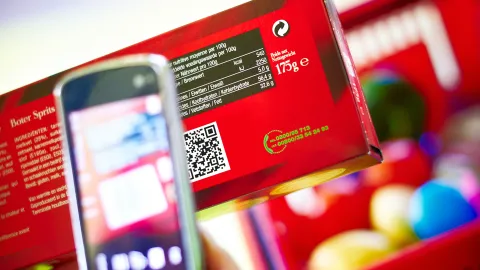Smarter barcodes as a consumer experience booster

The amount of product-related information in trading has grown significantly, and all signs point to the fact that the amount of information will continue to grow in the future. Requirements and needs for additional information come from many different directions. These include, for example, the digitization of trading, automation, the multi-channel nature of consumer communication, the growing demands for accountability and transparency, and legislative needs.
The maintenance of all these different information needs and the communication of information between different parties, as well as timely access to it, brings its own challenge to this whole.
From static to dynamic information
Consumers want transparency from the manufacturing of products through the supply chain all the way to recycling. A large part of this data is static in nature and can easily be added to, for example, GS1's Synkka product information service as new attributes and thus convey information to consumers using only the GTIN code (Global Trade Item Number) that identifies the product.
There will be more challenges when the information becomes dynamic and batch-specific. The batch number or some suitable date information can of course be printed on the package in plain language, which can be used to verify which product batch it is at any given time.
However, this does not enable the automatic connection of data and physical goods flows, because the information cannot be automatically read from the package. In addition, consumers want speed and simple use. This does not include reading the EAN barcode and separately entering the batch information manually into a user interface to get the correct information. You must be able to read this information from a single barcode, after which a possible website or application will automatically provide the correct desired information to the consumer.
With the help of this dynamic data, the store is also better able to monitor the movement of certain batches of goods in its own distribution channels, to optimize loss management and store replenishment. The store is also able to keep its promise that recalled or expired product batches will not be sold to consumers when they cannot even be sold at the checkout.
A step towards the future
So how can this problem be solved? One option is to try to add all the information to the product labels, but the available space imposes its limitations on this. At the moment, many operators have solved the problem by adding different barcodes to the packaging to serve different usage needs, but how many different barcodes can reasonably be placed on the packaging? In the end, how does anyone know which barcode is associated with which information?
The most sensible solution would be to take a decisive step towards the future and switch to using smarter barcodes, in which case all the necessary information can be included together in barcode packages.
This one entry can serve all usage needs throughout the life of the product. It frees up space in the packaging for other packaging markings, and by using, for example, the GS1 Digital Link standard, it is not necessary to design new packaging with new marketing barcodes for each different campaign, but this campaign specificity can be implemented digitally in background systems, which makes it cheaper, faster and especially more efficient.
The author, Kimmo Keravuori, works as GS1's development manager.

